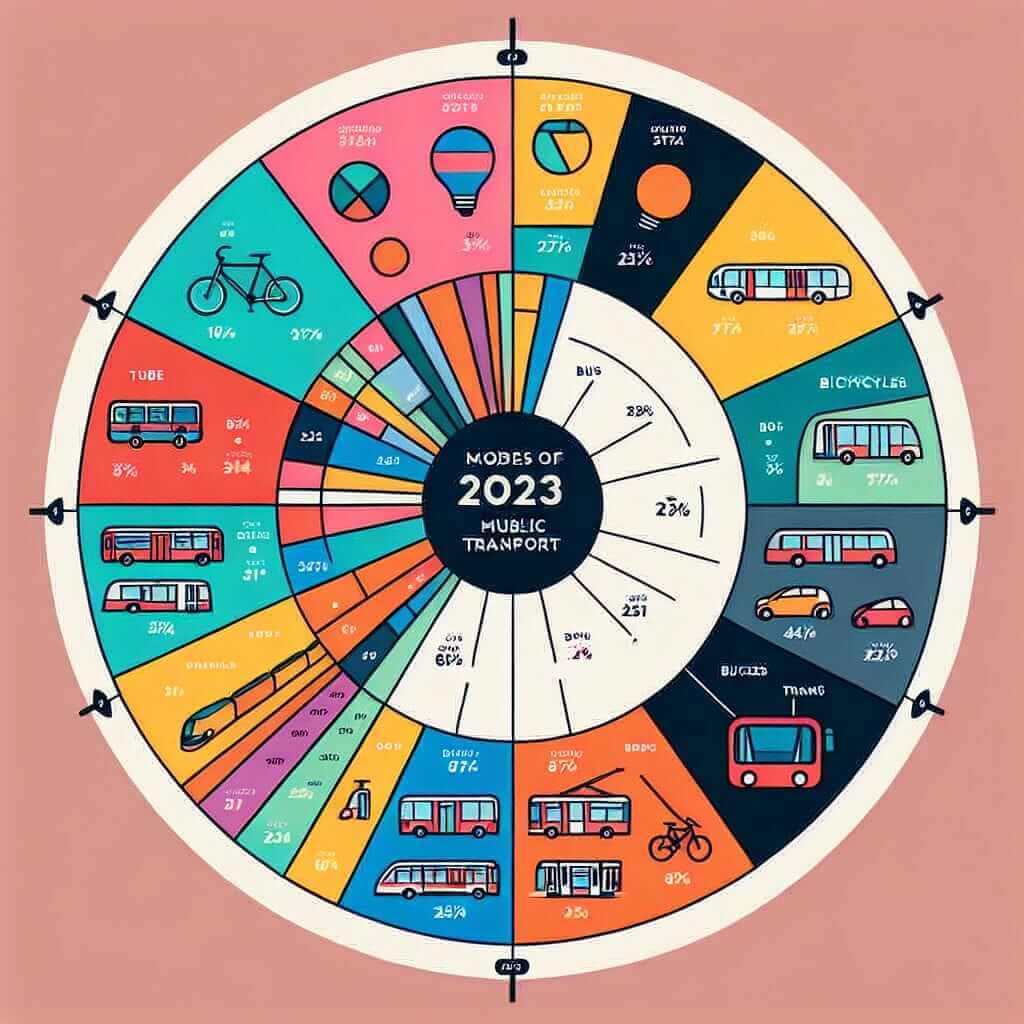The IELTS Writing Task 1 often presents data in the form of graphs, charts, or tables, requiring test-takers to analyze and report the information accurately and effectively. “Public transportation usage” is a recurring theme in recent IELTS exams, making it crucial for candidates to familiarize themselves with relevant vocabulary, grammatical structures, and effective data interpretation techniques.
Sample IELTS Writing Task 1 Questions
Here are a few potential IELTS Writing Task 1 questions related to “Public Transportation Usage in a Major City (2023)”:
- The chart below shows the percentage of people using different modes of public transport in London in 2023. Summarize the information by selecting and reporting the main features and making comparisons where relevant.
- The table illustrates the changes in the number of passengers using the subway, buses, and trams in New York City between 2018 and 2023. Write a report for a university lecturer describing the information shown below.
- The graph compares the average commute time by public transportation in Paris, Tokyo, and Berlin in 2023. Summarize the information presented, making comparisons where appropriate.
Sample IELTS Writing Task 1: Model Answer
Let’s focus on the first question from the list above. Below, you’ll find a sample chart, a model answer, and a breakdown of essential vocabulary and grammar points.
Sample Chart
Percentage of People Using Different Modes of Public Transport in London (2023)

| Mode of Transport | Percentage (%) |
|---|---|
| Underground (Tube) | 45 |
| Bus | 30 |
| Train | 15 |
| Tram | 5 |
| Bicycle | 5 |
Model Answer
The chart provides a breakdown of the various modes of public transportation utilized by residents in London during the year 2023.
The most popular mode of transportation is the Underground (Tube), accounting for almost half (45%) of all public transport journeys. Buses constitute the second most preferred option, with 30% of Londoners opting for this method. Trains make up a smaller proportion, at 15%, while trams and bicycles share an equal share of 5% each.
Overall, the chart reveals that the Underground and buses are the dominant modes of public transport in London, while trains, trams, and bicycles account for significantly smaller proportions of journeys.
(Word Count: 100 words)
Analysis and Key Takeaways
- Data Overview: Begin by stating the main purpose of the chart and the period it represents.
- Highlighting Key Features: Focus on the most significant data points. In this case, the dominance of the Underground and buses is crucial information.
- Making Comparisons: Use comparative language (e.g., “most popular,” “smaller proportion”) to highlight differences between data points.
- Summarizing: Conclude by summarizing the overall trends or patterns observed in the data.
- Vocabulary: Utilize a variety of vocabulary to describe trends and proportions (e.g., “accounting for,” “constitute,” “proportion,” “share”).
Essential Vocabulary
- Mode of transport: A system or method of transporting passengers or goods.
- Utilize: Make practical and effective use of.
- Account for: Make up a specified amount or proportion of.
- Constitute: Be (a part) of a whole.
- Proportion: A part, share, or number considered in comparative relation to a whole.
Grammar Tips
- Use a range of grammatical structures: This includes complex sentences, passive voice, and comparative structures.
- Pay attention to subject-verb agreement: Ensure your verbs agree in number with their subjects.
- Use prepositions accurately: Prepositions like “in,” “on,” “at,” “by,” and “for” are often used to describe time periods and data relationships.
Conclusion
Mastering the IELTS Writing Task 1 requires consistent practice and a good understanding of data interpretation techniques. By familiarizing yourself with common themes like public transportation usage, building a strong vocabulary, and practicing your grammar, you can confidently approach this section of the IELTS exam and aim for a Band 7+ score.